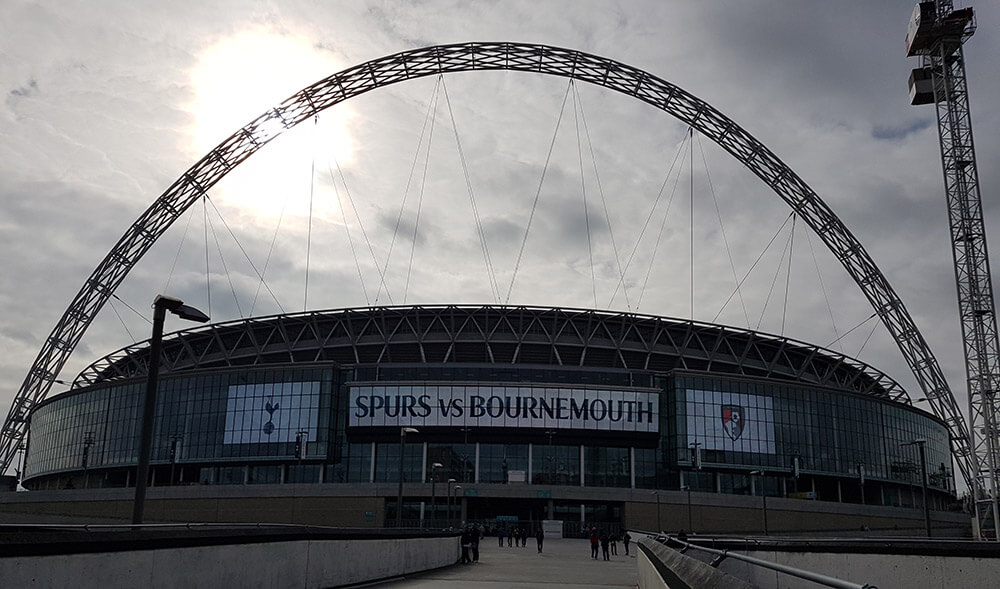Arsenal did it just over ten years ago, West Ham did it last season, whilst Tottenham are currently in the process of doing it. Stadium moves have been considered a vital part of the growth of all these London clubs, as they seek to provide improved capacity and facilities for supporters, whilst also increasing revenue streams that come with a modern new stadium. Chelsea set to be the next club to lay down new bricks and mortar in the English capital, constructing a new 60,000 capacity venue on the existing Stamford Bridge site at a projected cost of around £500 million.
Ambitions and Complexities
The architects for the project, Herzog and de Meuron, were apparently chosen by Chelsea owner Roman Abramovic due to their excellent previous stadium accomplishments, including the Bird’s Nest in Beijing and the Allianz Arena in Munich. The striking designs they have produced for the new Stamford Bridge stadium, are no less impressive than the other famous stadiums they have created around the world.
For this project, their key inspiration was said to be Westminster Abbey, with the new designs featuring 264 brick columns connected by glass around the outside, emulating the look of a cathedral. Although there were some initial jokes amongst the online media and fans when the stadium plans were initially revealed, with some even suggesting it looked like a giant slinky or egg cutter, but the general response was positive, with almost 80% of fans approving of the designs.
This has been an ambitious project fraught with complications from day one, due to the location of Stamford Bridge, including buildings in the immediate vicinity of the existing stadium and transport links, such as the local rail links. The 2016/17 Premier League champions had considered alternative locations, but given the difficulties they would have encountered elsewhere, opted for rebuilding on the same site as the best of various complex options for such an extensive project.
Project Delays and Finding a Temporary Home
Such complexities remain an issue, even after planning permission was finally granted in January 2017 and the official green light was provided by London Mayor, Sadiq Khan, in March. The initial idea was to move into the new venue for the 2021/22 season, although at a September meeting with prominent supporters’ groups, club officials confirmed that objective has now been pushed back to the start of the 2024/25 season. Additionally, the club will play at an alternative venue for as many as four seasons, once they eventually depart the current Stamford Bridge stadium at the end of the 2019/20 campaign.
Compared to many clubs throughout Europe moving to new homes, this is an extremely lengthy period. As yet, the club officials have been reluctant to clarify which venue will be their temporary home, but they did suggest at recent Chelsea fan forums that as many as eight locations have been considered within the M25 circle of London. Though possible ground sharing options have been rumoured at the Emirates with Arsenal, or the London Stadium with West Ham, the favourite and most expected choice is the temporary home of Tottenham Hotspur this season, Wembley Stadium, which will be available once the new White Hart Lane stadium is finished.
By the time Chelsea eventually move into what will undoubtedly be a fantastic new home, almost ten years will have passed between the plans leaving the drawing board, to playing their first game of the 2024/25 campaign. The club will clearly be hoping the transitional period will pass with the minimum of disruption, but one can’t help but wonder at potential inconveniences and uncertainties, so the choice of temporary venue will prove to be absolutely crucial in every respect.
OUCH: Chelsea’s switch to new Stamford Bridge delayed potentially until at least 2024 https://t.co/xEnA9Osur8 #ChelseaFC pic.twitter.com/tO9Nn87x8v
— Stadium Hoppers (@StadiumHoppers) November 11, 2017
How Will Fans and the Team Adapt?
Faithful fans will traverse all corners of London to see their favourite team in action, and possibly in higher numbers than can currently be catered for with the existing capacity at Stamford Bridge. Chelsea have already assured supporters that their ticketing departments and customer liaison teams will be completely prepared, ensuring that season ticket holders suffer the minimum inconvenience possible, in whichever venue is eventually announced as the temporary home.
However, will players and staff feel entirely comfortable during such a period of upheaval and transition for the club? It’s certainly an interesting question to pose, because as former super-agent Jon Smith mentioned during a look into transfers on the Betway blog, modern players can sometimes be finicky and emotional about even the slightest details of their surroundings.
This stadium move and lengthy transitional period may prove difficult to manage, therefore Chelsea will have to make sure everything runs like clockwork – on and off the pitch – ensuring that any accompanying complexities don’t harm the day to day running of the club; least of all those surrounding the fans and the team.
Given that Wembley is strongly tipped to be the chosen temporary venue, Chelsea officials have already consulted with their counterparts at Tottenham Hotspur, gauging their experiences during the current 2017-18 season. By comparison, Spurs are only using the national stadium as their temporary home for one season, with the new White Hart Lane stadium set to be completed in time for the 2018-19 campaign. By comparison, Chelsea would use the venue for a period of four seasons, so every minor detail is being taken into account.
